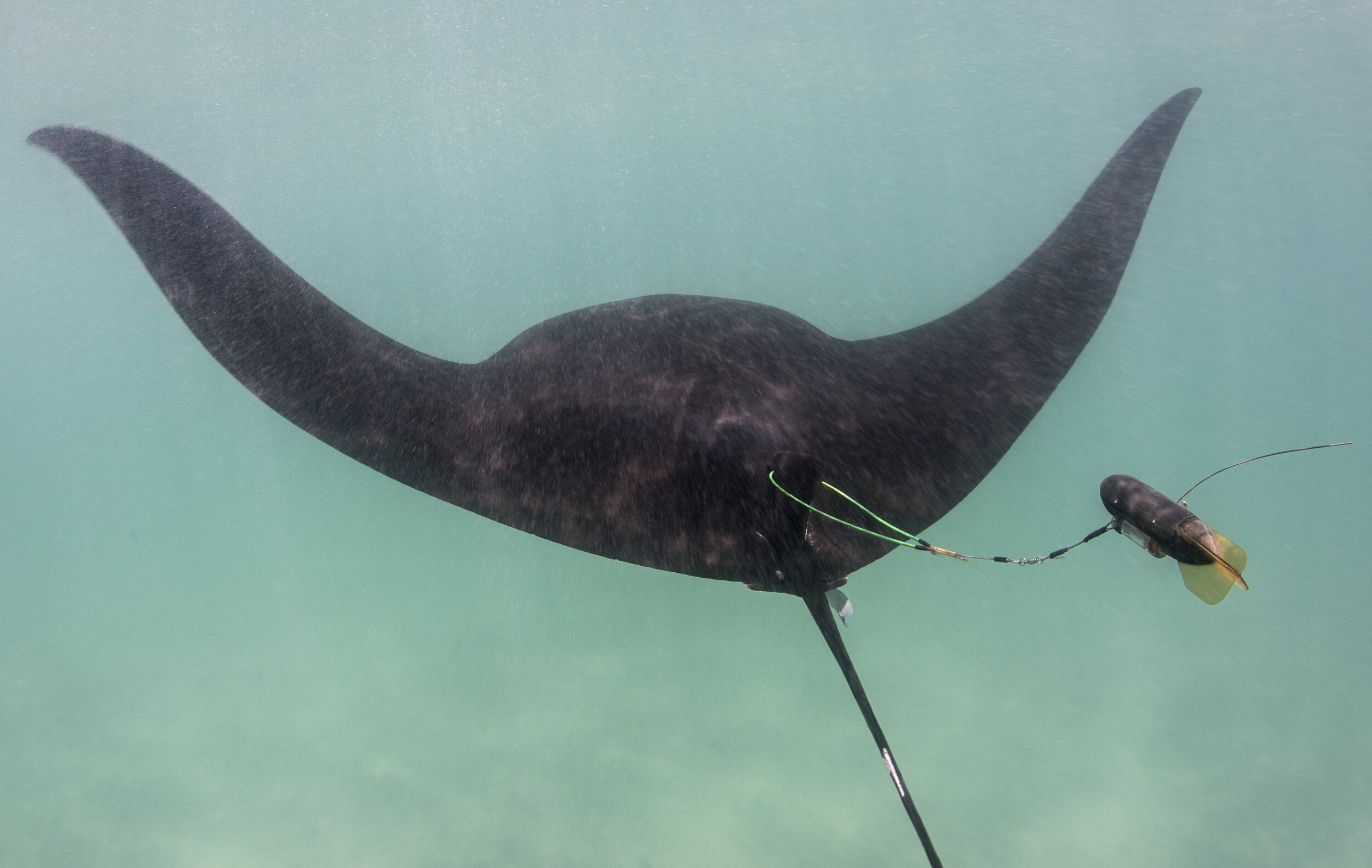Possible giant manta ray nursery discovered off coast of Florida
MMF has discovered that the shallow, coastal waters of south Florida may be a nursery ground for giant manta rays (Manta birostris). We began studying the manta rays of Florida in 2016 – using in water photography to identify individuals, record sex and maturity status, as well as document anthropogenic impacts.
A juvenile manta ray with MMF project manager / field researcher, Jessica Pate, in south Florida
All manta rays observed in these waters have been juveniles, and 50% have been re-sighted. This re-sighting data is evidence that manta rays are using the habitat over extended periods of time, a key criterion of an elasmobranch nursery habitat (Heupel et al., 2007). Manta rays in south Florida are frequently seen foul-hooked or entangled in fishing line and/or with strikes from boat propellers.
In June and July 2019, NOAA and MMF researchers collaborated to satellite tag manta rays in southern Florida. The research expedition was highly successful, with nine individual manta rays seen over both research trips. Five satellite tags were attached to juvenile manta rays (one to a female and four to males), and are programmed to stay on for six months.
Leo tagged with the highly advanced Smart Position and Temperature (SPOT) tag, which records a variety of measurements (such as temperature, salinity and depth). Photo credit: Dr. Andrea Marshall, MMF
Our SPOT tag, on a manta named Leo, has already been providing us data for over a month (see map below). The habitat utilization data collected from the tags will be crucial in determining important habitat for Florida’s manta rays. This information will also help us understand how manta rays will be affected by anthropogenic activities, such as fishing efforts, vessel traffic and oil/gas extraction, as well as inform future management decisions.
Click here to follow Leo's journey: https://www.trackturtles.com/leo/
We were able to tag our most frequently observed manta, a juvenile male named Gillie. We have known Gillie since August of 2017 and it will be fascinating to see where he goes!
We will keep you updated as new findings surface, so watch this space...
Meet Gillie, a juvenile giant manta ray in south Florida – we first met Gillie in August 2017 and have observed him a total of 20 times. During our encounters, we have removed fishing line from him and watched him recover from a boat strike injury. Photo credit: Bryant Turffs
We named two of the 'new' mantas after the children of two of our most dedicated volunteers, Erin and Gathan Broadus. We named one female Oceane, after their new baby, and the male with the SPOT tag, Leo, after their three year old son. Both Erin and Gathan have helped out on boat surveys and by looking for manta rays with planes and drones. Our heartfelt thanks to the Broadus family – we couldn't have done it without you!
A big thank you also to our research partner NOAA Fisheries for making this exciting project possible.
All tags are attached very carefully by expert researchers (using techniques to ensure they are as minimally invasive as possible) and provide invaluable scientific data which helps to deepen our understanding of manta rays, allowing us to better advocate for their protection.
All research was conducted under Florida Fish and Wildlife Commission Special Activity License SAL-19-2053A-SRP.



